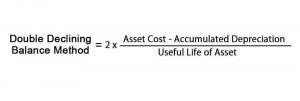Managing potential financial impacts resulting from disputes or claims is vital to maintaining cash flow stability and project momentum. Hence, familiarity with the legal avenues for resolution becomes a critical aspect of successful cash flow management in construction projects. Identifying and leveraging tax incentives or credits available for construction projects is an opportunity to optimize cash flow in construction. Construction projects often qualify for specific tax incentives or credits provided by local or federal authorities to promote certain activities or investments. By identifying and capitalizing on these incentives, construction companies can reduce tax liabilities and improve cash flow in construction. Utilizing available tax incentives strategically can positively impact the project’s financial health by freeing up funds for other essential project aspects or investments.
Construction Insurance: Types, Coverages & Key Insights
By automating these processes, the software not only helps streamline financial management but also minimizes the risk of errors, ensuring more accurate billing and expense tracking. This comprehensive approach provides contra asset account a clearer financial picture, facilitating better cash flow management — and freeing up resources to focus on project delivery and firm growth. Utilizing cash flow projection reports is crucial for effectively managing and forecasting future cash positions.
Data Collection and Analysis
By factoring in these variances and contingencies, construction companies create Accounting for Churches a buffer to mitigate potential financial risks and uncertainties. Gathering historical data is a foundational step in construction project financial planning. This involves collecting and analyzing past financial records encompassing expenses, revenues, payment schedules, and cash flow patterns from projects similar in nature or scale. Examining historical data provides valuable insights into financial trends, potential challenges, and successful strategies employed in past projects. It serves as a reference point for creating accurate cash flow forecasts and making informed financial decisions for the current project. In the realm of construction projects, understanding and effectively managing cash flow in construction is the bedrock of financial success.
Estimate the projected income and expenses based on the hypothetical variables
Other pros bill clients on time, all the time with Buildertrend Invoicing – you can too.
Categorizing and forecasting expenses is equally essential for effective financial planning in construction projects. This involves breaking down and estimating various expenditures, encompassing material costs, labor expenses, subcontractor payments, administrative overheads, and other operational costs. Creating a detailed expenditure breakdown helps in anticipating and budgeting for different project costs. A healthy cash flow in construction not only ensures that bills and employees are paid on time but also fosters a company’s growth and reputation within the industry. It’s about having the financial agility to maneuver through the unpredictable nature of construction projects.
- Construction loans have plenty of advantages for companies dealing in building projects, and they give room for financial flexibility that sees the project through to completion.
- While having the right tools and processes in place is essential, the significance of training cannot be overstated.
- Non-compliance can result in penalties, fines, or legal complications that may adversely affect cash flow and project finances.
- Get started with Buildertrend’s construction company software and schedule a demo today.
- This may include striking out pay-if-paid clauses, or adding terms that allow you to collect retainage faster.
- If the inflow of cash becomes negative – that is, the money coming in is less than the money going out – it can pose serious problems to a company’s financial and overall health.
Fund Your Projects the Right Way
A contractor’s cash flow statement or report is an analysis of all the cash that came in and went out for a given period (usually one month). Past reports are good to have around because they can help you spot trends and predict future report amounts. While it is good to pay your bills promptly, if you continue to spend money you don’t have yet, you will end up in a negative cash flow situation (which is not good). The average number of days it takes to get paid in construction is between 60 and 90. Strongly consider setting a realistic goal to reduce that number to 50 days.
- We provide commentary based on historical data and analyst forecasts only using an unbiased methodology and our articles are not intended to be financial advice.
- This might involve optimizing material usage, investing in technology to improve project management, or cross-training employees to handle multiple tasks.
- The projected cost to complete must then be allocated over the remaining duration of the project.
- For instance, unexpected material price hikes can throw budgets off course, as seen during the COVID-19 pandemic when steel and lumber prices surged.
- We do this to reflect that growth tends to slow more in the early years than it does in later years.
- Let’s look more closely at what cash flow management is, problems in the construction industry – and possible solutions.
Cashflow forecasting is a method to predict the inflow and outflow of cash in a business over a given period. In construction, this involves estimating the payments that will be received from clients and the expenses that will be incurred in running the project. When it comes to creating and maintaining cash flow projection reports, specificity and thoroughness in the initial setup are key. Dedicating time and effort to meticulously detail these reports from the start pays dividends in the long run.
How To Help Construction Business Owners Control Cash Flow?
Understanding phases and their cash flow dynamics aids in resource allocation. Creating a cash flow schedule is a fundamental step in construction project financial management. This involves utilizing tools such as spreadsheets or dedicated software to outline the expected cash inflows and outflows over a specified timeline. The schedule incorporates payment milestones, anticipated expenses, and various financial activities related cash flow in construction to the project. Navigating the financial waters of the construction industry requires mastery over cash flow, which is as vital to project success as the foundation is to a building.




